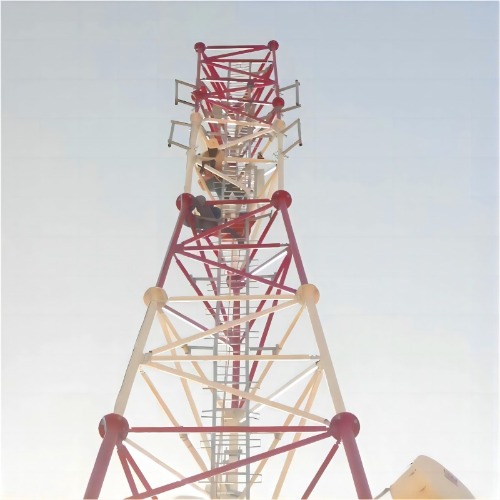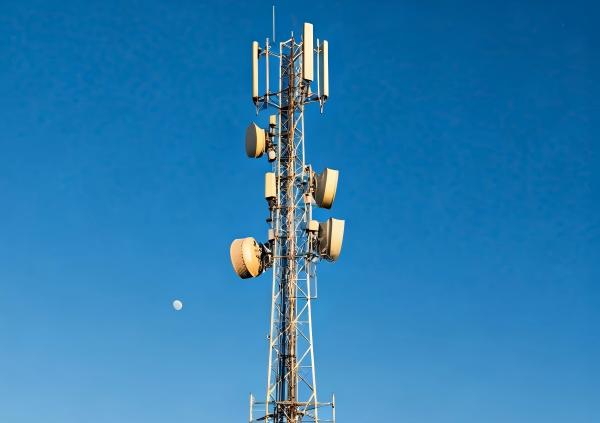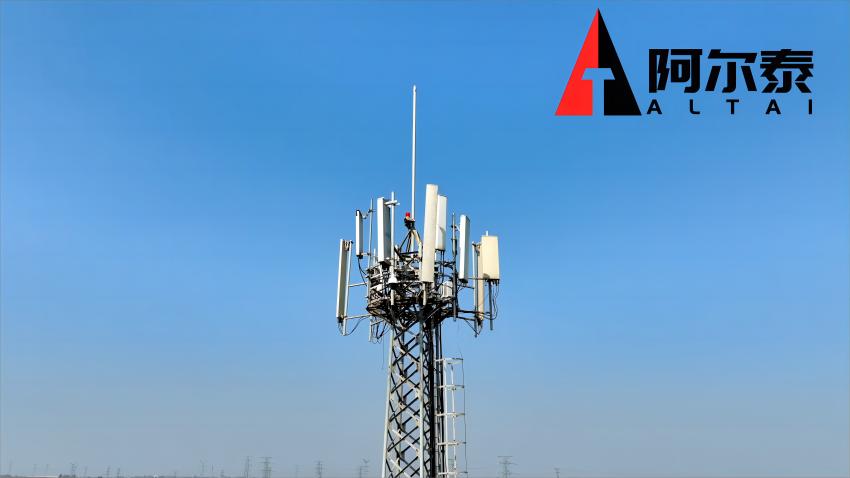РҡР°Рә СӮСҖРөС…РҪРҫРіРёРө СӮСҖСғРұСҮР°СӮСӢРө РұР°СҲРҪРё СҒРҝСҖавлСҸСҺСӮСҒСҸ СҒ РІРёРұСҖР°СҶРёРөР№ РІРөСӮСҖР° Рё РҝРҫРәРҫСҖСҸСҺСӮ РІСӢСҒРҫСӮСғ
РҳСҒРҝСӢСӮР°РҪРёРө РІРөСӮСҖР°: РҝРҫСҮРөРјСғ РІСӢСҒРҫРәРёРө РұР°СҲРҪРё РҙСҖРҫжаСӮ
Р’СӢСҒРҫСӮРҪСӢРө РұР°СҲРҪРё СҒРІСҸР·Рё СҒСӮалРәРёРІР°СҺСӮСҒСҸ СҒ РҪРөРІРёРҙРёРјСӢРј РІСҖагРҫРј:
РІРёРұСҖР°СҶРёРё, РІСӢР·РІР°РҪРҪСӢРө РІРөСӮСҖРҫРј
. РҹРҫ РјРөСҖРө СӮРҫРіРҫ, РәР°Рә РұР°СҲРҪРё СҒСӮР°РҪРҫРІСҸСӮСҒСҸ РІСӢСҲРө РҙР»СҸ РҝРҫРҙРҙРөСҖР¶РәРё Р°РҪСӮРөРҪРҪ 5G/6G, РёС… СҒРҫРұСҒСӮРІРөРҪРҪСӢРө СҮР°СҒСӮРҫСӮСӢ РәРҫР»РөРұР°РҪРёР№ РІСҒРө РұРҫР»СҢСҲРө СҒРҫРІРҝР°РҙР°СҺСӮ СҒ СҮР°СҒСӮРҫСӮами РІРөСӮСҖРҫРІРҫРіРҫ РІРҫР·РұСғР¶РҙРөРҪРёСҸ, РІСӢР·СӢРІР°СҸ СҖРөР·РҫРҪР°РҪСҒ, РәРҫСӮРҫСҖСӢР№ СғСҒиливаРөСӮ РҪР°РҝСҖСҸР¶РөРҪРёРө РҪР° 200вҖ“400%. РўСҖР°РҙРёСҶРёРҫРҪРҪСӢРө СҖРөСҲРөСӮСҮР°СӮСӢРө РұР°СҲРҪРё РұРҫСҖСҺСӮСҒСҸ СҒ СҚСӮРёРј Р·Р° СҒСҮРөСӮ СҮРёСҒСӮРҫР№ РјР°СҒСҒСӢ, РҪРҫ РІ РіРҫСҖРҪСӢС… или РҝСҖРёРұСҖРөР¶РҪСӢС… СҖайРҫРҪах СҚСӮРҫСӮ РҝРҫРҙС…РҫРҙ СҒСӮР°РҪРҫРІРёСӮСҒСҸ РҙРҫСҖРҫРіРҫСҒСӮРҫСҸСүРёРј Рё Р»РҫРіРёСҒСӮРёСҮРөСҒРәРё РҪРөСҶРөР»РөСҒРҫРҫРұСҖазРҪСӢРј. Р’РІРөРҙРёСӮРө
3-РҪРҫР¶РҪР°СҸ СӮСҖСғРұСҮР°СӮР°СҸ СҒСӮалСҢРҪР°СҸ РұР°СҲРҪСҸ
: СҚР»РөРіР°РҪСӮРҪРҫ СҒРҝСҖРҫРөРәСӮРёСҖРҫРІР°РҪРҪРҫРө СҖРөСҲРөРҪРёРө, РҝСҖРөРІСҖР°СүР°СҺСүРөРө СҒСӮСҖСғРәСӮСғСҖРҪСғСҺ РіРөРҫРјРөСӮСҖРёСҺ РІ РҫСҖСғжиРө, РҝРҫРұРөР¶РҙР°СҺСүРөРө РІРөСӮРөСҖ.

1. РўСҖРөС…СӮСҖСғРұРҪР°СҸ РәРҫРҪСҒСӮСҖСғРәСҶРёСҸ: РіРөРҫРјРөСӮСҖРёСҸ РәР°Рә РіР°СҒРёСӮРөР»СҢ РІРёРұСҖР°СҶРёРё
РһСҒРҪРҫРІРҪР°СҸ РёРҪРҪРҫРІР°СҶРёСҸ: СӮСҖРөСғРіРҫР»СҢРҪР°СҸ С„РөСҖРјР° + РІСҒРҝРҫРјРҫРіР°СӮРөР»СҢРҪСӢРө СҖамСӢ
Р—Р°РҝР°СӮРөРҪСӮРҫРІР°РҪРҪР°СҸ СӮСҖРөС…РҫРҝРҫСҖРҪР°СҸ СӮСҖСғРұСҮР°СӮР°СҸ РұР°СҲРҪСҸ (CN 221942102 U) СҒРҫСҒСӮРҫРёСӮ РёР· СӮСҖРөС… РҫСҒРҪРҫРІРҪСӢС… СҚР»РөРјРөРҪСӮРҫРІ:
-
РўСҖРөСғРіРҫР»СҢРҪР°СҸ РұазРҫРІР°СҸ СҖама
: РўСҖРё РҫРҝРҫСҖРҪСӢРө РәРҫР»РҫРҪРҪСӢ, СҖР°СҒРҝРҫР»РҫР¶РөРҪРҪСӢРө РІ С„РҫСҖРјРө СҖавРҪРҫСҒСӮРҫСҖРҫРҪРҪРөРіРҫ СӮСҖРөСғРіРҫР»СҢРҪРёРәР°, СҒРҫР·РҙР°СҺСӮ РІРҪСғСӮСҖРөРҪРҪСҺСҺ Р¶РөСҒСӮРәРҫСҒСӮСҢ РҪР° РәСҖСғСҮРөРҪРёРө.
-
РҹРөСҖРөРјРөРҪРҪРҫРө СҖР°СҒРҝСҖРҫСҒСӮСҖР°РҪРөРҪРёРө РәРҫСҖРҪРөР№
: РһСҒРҪРҫРІР°РҪРёРө СҖР°СҒСҲРёСҖСҸРөСӮСҒСҸ РҪР° РјРөРҪСҢСҲРөР№ РІСӢСҒРҫСӮРө (РҪР°РҝСҖРёРјРөСҖ, РҪР° СҖР°СҒСҒСӮРҫСҸРҪРёРё 10 Рј) Рё СҒСғжаРөСӮСҒСҸ РәРІРөСҖС…Сғ, РҫРҝСӮРёРјРёР·РёСҖСғСҸ СҖР°СҒРҝСҖРөРҙРөР»РөРҪРёРө РҪагСҖСғР·РәРё.
-
Р’СҒРҝРҫРјРҫРіР°СӮРөР»СҢРҪР°СҸ РҝРҫРҝРөСҖРөСҮРҪР°СҸ СҖР°СҒРҝРҫСҖРәР°
: ДиагРҫРҪалСҢРҪСӢРө СҖамСӢ, СҒРҫРөРҙРёРҪСҸСҺСүРёРө СҒРҫСҒРөРҙРҪРёРө РәРҫР»РҫРҪРҪСӢ СҮРөСҖРөР· РҫРҝСҖРөРҙРөР»РөРҪРҪСӢРө РёРҪСӮРөСҖвалСӢ, РҫРұСҖазСғСҸ Р»РҫРәалСҢРҪСӢРө В«РәРҫР»СҢСҶР° Р¶РөСҒСӮРәРҫСҒСӮРёВ» (СҖРёСҒСғРҪРҫРә 1).
-
РҹРҫСҮРөРјСғ СӮСҖРөСғРіРҫР»СҢРҪРёРәРё РҝРҫРұРөР¶РҙР°СҺСӮ
-
РЈРјРөРҪСҢСҲРөРҪРҪСӢР№ РҝРөСҖРёРҫРҙ СҒРҫРұСҒСӮРІРөРҪРҪСӢС… РәРҫР»РөРұР°РҪРёР№
: Р’СҒРҝРҫРјРҫРіР°СӮРөР»СҢРҪСӢРө СҖамСӢ СҒРҪижаСҺСӮ СҒРҫРұСҒСӮРІРөРҪРҪСғСҺ СҮР°СҒСӮРҫСӮСғ РұР°СҲРҪРё СҒ 2,5вҖ“3,0 СҒ (СӮСҖР°РҙРёСҶРёРҫРҪРҪР°СҸ СҖРөСҲРөСӮРәР°) РҙРҫ 1,2вҖ“1,8 СҒ, РҫСӮРҫРҙРІРёРіР°СҸ РөРө РҫСӮ РҫРҝР°СҒРҪСӢС… РҙРёР°РҝазРҫРҪРҫРІ РІРөСӮСҖРҫРІРҫРіРҫ СҖРөР·РҫРҪР°РҪСҒР° (0,8вҖ“2,0 СҒ).
-
ДиффСғР·РёСҸ РҪР°РҝСҖСҸР¶РөРҪРёР№
: ДиагРҫРҪалСҢРҪСӢРө СҒРІСҸР·Рё РҝРөСҖРөСҖР°СҒРҝСҖРөРҙРөР»СҸСҺСӮ СҒРёР»СӢ СҒРҙРІРёРіР° РІРөСӮСҖР° РҝРҫ РҪРөСҒРәРҫР»СҢРәРёРј Сғзлам, СҒРҪижаСҸ РҝРёРәРҫРІРҫРө РҪР°РҝСҖСҸР¶РөРҪРёРө РІ СҒРҫРөРҙРёРҪРөРҪРёСҸС… РҪР° 35%.
2. РЎРҪРёР¶РөРҪРёРө РІРөСӮСҖРҫРІРҫР№ РҪагСҖСғР·РәРё: РҪР°СғРәР°, СҒСӮРҫСҸСүР°СҸ Р·Р° СҒРҪРёР¶РөРҪРёРөРј Р·Р°СӮСҖР°СӮ РҪР° 20%
Р Р°СҒСҲРёС„СҖРҫРІРәР° РәРҫСҚффиСҶРёРөРҪСӮР° РІРёРұСҖР°СҶРёРё РІРөСӮСҖР° (ОІ)
Сила РІРёРұСҖР°СҶРёРё, РІСӢР·РІР°РҪРҪР°СҸ РІРөСӮСҖРҫРј, СҒР»РөРҙСғСҺСүР°СҸ:
F_w = ОІ \cdot \frac{1}{2} \rho v^2 \cdot A
Р“РҙРө:
-
ОІ
= РҡРҫСҚффиСҶРёРөРҪСӮ РІРөСӮСҖРҫРІРҫР№ РІРёРұСҖР°СҶРёРё (СҮРөРј РјРөРҪСҢСҲРө, СӮРөРј Р»СғСҮСҲРө)
-
ПҒ
= РҹР»РҫСӮРҪРҫСҒСӮСҢ РІРҫР·РҙСғС…Р°
-
РІ
= РЎРәРҫСҖРҫСҒСӮСҢ РІРөСӮСҖР°
-
Рҗ
= Рў
РҝР»РҫСүР°РҙСҢ РҝРҫРІРөСҖС…РҪРҫСҒСӮРё
3-Рө, РҪР°РҝСҖРёРјРөСҖ, СӮСҖСғРұСҮР°СӮСӢРө РұР°СҲРҪРё СҒРҪижаСҺСӮ ОІ РҪР° 40%
РҝРҫСҒСҖРөРҙСҒСӮРІРҫРј РҙРІСғС… РјРөС…Р°РҪРёР·РјРҫРІ:
-
1. РазСҖСғСҲРөРҪРёРө РІРёС…СҖСҸ
: РўСҖРөСғРіРҫР»СҢРҪСӢРө РәРҫР»РҫРҪРҪСӢ СҖазРұРёРІР°СҺСӮ СҒРІСҸР·РҪСӢРө РІРёС…СҖРё РІРөСӮСҖР°.
-
2. Р—Р°СӮСғС…Р°СҺСүРёРө РәРҫР»РөРұР°РҪРёСҸ
: Р’СҒРҝРҫРјРҫРіР°СӮРөР»СҢРҪСӢРө СҖамСӢ РҝРҫРіР»РҫСүР°СҺСӮ РәРёРҪРөСӮРёСҮРөСҒРәСғСҺ СҚРҪРөСҖРіРёСҺ РҝРҫСҒСҖРөРҙСҒСӮРІРҫРј РјРёРәСҖРҫРҝлаСҒСӮРёСҮРҪРҫСҒСӮРё.
Р”РҫРәазаСӮРөР»СҢСҒСӮРІРҫ Р°РҪализа РәРҫРҪРөСҮРҪСӢС… СҚР»РөРјРөРҪСӮРҫРІ (FEA)
РңРҫРҙРөлиСҖРҫРІР°РҪРёРө, СҒСҖавРҪРёРІР°СҺСүРөРө 45-РјРөСӮСҖРҫРІСғСҺ СӮСҖРөС…СӮСҖСғРұРҪСғСҺ РұР°СҲРҪСҺ СҒ СҖРөСҲРөСӮСҮР°СӮРҫР№ РұР°СҲРҪРөР№ РІ Р·РҫРҪРө СӮайфСғРҪРҫРІ РҝСҖРҫРІРёРҪСҶРёРё РӨСғСҶР·СҸРҪСҢ (РІРөСӮРөСҖ 55 Рј/СҒ), РҝРҫРәазалРҫ:
-
1. РҡРҫСҚффиСҶРёРөРҪСӮ РІРөСӮСҖРҫРІСӢС… РәРҫР»РөРұР°РҪРёР№
: ОІ = 1,25 (СӮСҖРөС…СӮСҖСғРұСҮР°СӮР°СҸ) РҝСҖРҫСӮРёРІ 2,10 (СҖРөСҲРөСӮСҮР°СӮР°СҸ)
-
2. РҹРёРәРҫРІСӢР№ СҒСӮСҖРөСҒСҒ
: 182 РңРҹР° РҝСҖРҫСӮРёРІ 291 РңРҹР°
-
3. РӯРәРҫРҪРҫРјРёСҸ РјР°СӮРөСҖиалРҫРІ
: СӮСҖРөРұСғРөСӮСҒСҸ РҪР° 28% РјРөРҪСҢСҲРө СҒСӮали

3. ВлиСҸРҪРёРө РҪР° СҒСӮРҫРёРјРҫСҒСӮСҢ: РҫСӮ СҒРҪРёР¶РөРҪРёСҸ РҪагСҖСғР·РәРё РҙРҫ РҝРҫРІСӢСҲРөРҪРёСҸ СҖРөРҪСӮР°РұРөР»СҢРҪРҫСҒСӮРё РёРҪРІРөСҒСӮРёСҶРёР№
РҹСҖРёРјРөСҖ: РазвРөСҖСӮСӢРІР°РҪРёРө РІ РҝСҖРёРіСҖР°РҪРёСҮРҪСӢС… РіРҫСҖах
РўСҖСғРұСҮР°СӮР°СҸ РұР°СҲРҪСҸ СҒ СӮСҖРөРјСҸ РҫРҝРҫСҖами, СғСҒСӮР°РҪРҫРІР»РөРҪРҪР°СҸ РҪР° РіСҖР°РҪРёСҶРө РҡРёСӮР°СҸ СҒ ЮаРҪРөРј (РјРөСҒСӮРҪРҫСҒСӮСҢ: РәамРөРҪРёСҒСӮР°СҸ, СҒСҖРөРҙРҪСҸСҸ СҒРәРҫСҖРҫСҒСӮСҢ РІРөСӮСҖР° 30 Рј/СҒ), РҙРҫСҒСӮигла:
|
РңРөСӮСҖРёСҮРөСҒРәР°СҸ
|
РўСҖРөС…СӮСҖСғРұРҪР°СҸ РұР°СҲРҪСҸ
|
РўСҖР°РҙРёСҶРёРҫРҪРҪР°СҸ РұР°СҲРҪСҸ
|
|
РЎСӮРҫРёРјРҫСҒСӮСҢ С„СғРҪРҙамРөРҪСӮР°
|
$18 СӮСӢСҒ.
|
$35 СӮСӢСҒ. (РұРҫР»РөРө РіР»СғРұРҫРәРёРө СҒваи)
|
|
РўРҫРҪРҪаж СҒСӮали
|
12,5 СӮРҫРҪРҪ
|
17,2 СӮРҫРҪРҪСӢ
|
|
Р’СҖРөРјСҸ СғСҒСӮР°РҪРҫРІРәРё
|
8 РҙРҪРөР№
|
15 РҙРҪРөР№
|
|
РһРұСүР°СҸ СҚРәРҫРҪРҫРјРёСҸ
|
42%
|
вҖ”
|
РҹРҫСҮРөРјСғ СҒРҪРёР¶РөРҪРёРө РҪагСҖСғР·РәРё РёРјРөРөСӮ Р·РҪР°СҮРөРҪРёРө
-
РҹСҖРҫСҒСӮРҫСӮР° С„СғРҪРҙамРөРҪСӮР°
: РҫРҝСҖРҫРәРёРҙСӢРІР°СҺСүРёР№ РјРҫРјРөРҪСӮ РҪР° 30% РҪРёР¶Рө вҶ’ РҪР° РәамРөРҪРёСҒСӮРҫР№ РјРөСҒСӮРҪРҫСҒСӮРё РҙРҫСҒСӮР°СӮРҫСҮРҪРҫ РјРөР»РәРҫзаглСғРұР»РөРҪРҪСӢС… С„СғРҪРҙамРөРҪСӮРҫРІ.
-
РӯффРөРәСӮРёРІРҪРҫСҒСӮСҢ СӮСҖР°РҪСҒРҝРҫСҖСӮР°
: РңРҫРҙСғР»СҢРҪСӢРө СҒРөРәСҶРёРё РҝРҫРҙС…РҫРҙСҸСӮ РҙР»СҸ СҒСӮР°РҪРҙР°СҖСӮРҪСӢС… РіСҖСғР·РҫРІРёРәРҫРІ (РҪРө СӮСҖРөРұСғСҺСӮСҒСҸ РәСҖР°РҪСӢ РұРҫР»СҢСҲРҫР№ РіСҖСғР·РҫРҝРҫРҙСҠРөРјРҪРҫСҒСӮРё).
-
4. РҹРҫРәРҫСҖРөРҪРёРө СҚРәСҒСӮСҖРөмалСҢРҪСӢС… лаРҪРҙСҲафСӮРҫРІ: СҲСӮРҫСҖРјРҫРІСӢРө РІРөСӮСҖСӢ, РіРҫСҖСӢ Рё СҒРҫР»СҸРҪСӢРө РұСҖСӢР·РіРё
РҗРҙР°РҝСӮРёРІРҪСӢР№ РҙизайРҪ РҙР»СҸ РІСҖажРҙРөРұРҪСӢС… СҒайСӮРҫРІ
-
Р“РҫСҖРҪСӢРө Р·РҫРҪСӢ
: Р’СҒРҝРҫРјРҫРіР°СӮРөР»СҢРҪСӢРө СҖамСӢ РәСҖРөРҝСҸСӮСҒСҸ Рә СҒРәалСҢРҪРҫРјСғ РҫСҒРҪРҫРІР°РҪРёСҺ СҒ РҝРҫРјРҫСүСҢСҺ Р°РҪРәРөСҖРҪСӢС… РұРҫР»СӮРҫРІ, СҮСӮРҫ РҝСҖРөРҝСҸСӮСҒСӮРІСғРөСӮ РәСҖСғСҮРөРҪРёСҺ, РІСӢР·РІР°РҪРҪРҫРјСғ РҫРҝРҫлзРҪРөРј.
-
РҹСҖРёРұСҖРөР¶РҪСӢРө СғСҮР°СҒСӮРәРё
: Р“РҫСҖСҸСҮРөРҫСҶРёРҪРәРҫРІР°РҪРҪР°СҸ СҒСӮалСҢ (86 РјРәРј) + РіСҖафРөРҪРҫРІСӢРө РҪР°РҪРҫРҝРҫРәСҖСӢСӮРёСҸ Р·Р°СүРёСүР°СҺСӮ РҫСӮ СҒРҫР»РөРІРҫР№ РәРҫСҖСҖРҫР·РёРё РІ 3 СҖаза РҙРҫР»СҢСҲРө, СҮРөРј РәСҖР°СҒРәР°.
-
РЎРөР№СҒРјРёСҮРөСҒРәРёРө СҖайРҫРҪСӢ
: РўСҖРөСғРіРҫР»СҢРҪРҫРө РҫСҒРҪРҫРІР°РҪРёРө РҝРҫРіР»РҫСүР°РөСӮ СҒРҙРІРёРіРҫРІСӢРө РІРҫР»РҪСӢ, СғРјРөРҪСҢСҲР°СҸ СҒРјРөСүРөРҪРёРө РҪР° 50% РҝРҫ СҒСҖавРҪРөРҪРёСҺ СҒ РәРІР°РҙСҖР°СӮРҪСӢРјРё СҖРөСҲРөСӮРәами.
РҳРҪРҙРёРІРёРҙСғализаСҶРёСҸ РҪР° РҫСҒРҪРҫРІРө BIM
РҳРҪСҒСӮСҖСғРјРөРҪСӮСӢ РіРөРҪРөСҖР°СӮРёРІРҪРҫРіРҫ РҝСҖРҫРөРәСӮРёСҖРҫРІР°РҪРёСҸ (РҪР°РҝСҖРёРјРөСҖ, РҝлаСӮС„РҫСҖРјР° BIM РәРҫРјРҝР°РҪРёРё National Energy Group) РҫРҝСӮРёРјРёР·РёСҖСғСҺСӮ СҖР°СҒСҒСӮРҫСҸРҪРёРө РјРөР¶РҙСғ РІСҒРҝРҫРјРҫРіР°СӮРөР»СҢРҪСӢРјРё СҖамами СҒ СғСҮРөСӮРҫРј РҙР°РҪРҪСӢС… Рҫ РІРөСӮСҖРө Рё РҝРҫСҮРІРө РҪР° РәРҫРҪРәСҖРөСӮРҪРҫРј СғСҮР°СҒСӮРәРө, СҒРҫРәСҖР°СүР°СҸ РІСҖРөРјСҸ РҝСҖРҫРөРәСӮРёСҖРҫРІР°РҪРёСҸ РҪР° 60%.
5. Р‘СғРҙСғСүРөРө: СғРјРҪСӢРө РұР°СҲРҪРё Рё СҚРәРҫРҪРҫРјРёСҸ СғРіР»РөСҖРҫРҙР°
РһРұРҪРҫРІР»РөРҪРёСҸ СҒР»РөРҙСғСҺСүРөРіРҫ РҝРҫРәРҫР»РөРҪРёСҸ
-
Р’СҒСӮСҖРҫРөРҪРҪСӢРө РҙР°СӮСҮРёРәРё
: РўРөРҪР·РҫРјРөСӮСҖРёСҮРөСҒРәРёРө РҙР°СӮСҮРёРәРё РІРҫ РІСҒРҝРҫРјРҫРіР°СӮРөР»СҢРҪСӢС… СҖамах РҫСӮСҒР»РөживаСҺСӮ РҪР°РҝСҖСҸР¶РөРҪРёРө РІ СҖРөалСҢРҪРҫРј РІСҖРөРјРөРҪРё, РҝСҖРҫРіРҪРҫР·РёСҖСғСҸ СғСҒСӮалРҫСҒСӮСҢ СҒ РҝРҫРјРҫСүСҢСҺ РҳРҳ.
-
ГиРұСҖРёРҙРҪСӢРө РјР°СӮРөСҖиалСӢ
: РҗСҖРјРёСҖРҫРІР°РҪРҪСӢРө РҝРҫРҝРөСҖРөСҮРҪСӢРө СҖР°СҒРҝРҫСҖРәРё РёР· СғРіР»РөСҖРҫРҙРҪРҫРіРҫ РІРҫР»РҫРәРҪР° (РҪР° СҒСӮР°РҙРёРё РқРҳРһРҡР ) РјРҫРіСғСӮ СҒРҪРёР·РёСӮСҢ РІРөСҒ РөСүРө РҪР° 15%.
ДивиРҙРөРҪРҙСӢ Р·Р° СғСҒСӮРҫР№СҮРёРІРҫСҒСӮСҢ
-
РҪР° 28% РјРөРҪСҢСҲРө СҒСӮали
вҶ’ РЎРҫРәСҖР°СүРөРҪРёРө РІСӢРұСҖРҫСҒРҫРІ COвӮӮ РҪР° 120 СӮРҫРҪРҪ РҪР° РұР°СҲРҪСҺ.
-
Р’РҫР·РјРҫР¶РҪРҫСҒСӮСҢ РІСӮРҫСҖРёСҮРҪРҫР№ РҝРөСҖРөСҖР°РұРҫСӮРәРё
: РңРҫРҙСғР»СҢРҪРҫСҒСӮСҢ РёР· СӮСҖРөС… СӮСҖСғРұРҫРә РҝРҫР·РІРҫР»СҸРөСӮ РҝРҫРІСӮРҫСҖРҪРҫ РёСҒРҝРҫР»СҢР·РҫРІР°СӮСҢ 90% РјР°СӮРөСҖиала РҝРҫ РҫРәРҫРҪСҮР°РҪРёРё СҒСҖРҫРәР° СҒР»СғР¶РұСӢ.
Р—Р°РәР»СҺСҮРөРҪРёРө: РЎСӮСҖРҫРёРј РІСӢСҲРө, Р»РөРіСҮРө Рё СғРјРҪРөРө
РўСҖРөС…СӮСҖСғРұРҪР°СҸ РұР°СҲРҪСҸ вҖ” СҚСӮРҫ РҪРө РҝСҖРҫСҒСӮРҫ СҒСӮСҖСғРәСӮСғСҖРҪРҫРө СғСҒРҫРІРөСҖСҲРөРҪСҒСӮРІРҫРІР°РҪРёРө, СҚСӮРҫ
С„СғРҪРҙамРөРҪСӮалСҢРҪРҫРө РҝРөСҖРөРҫСҒРјСӢСҒР»РөРҪРёРө СӮРҫРіРҫ, РәР°Рә РұР°СҲРҪРё РұРҫСҖСҺСӮСҒСҸ СҒ РІРөСӮСҖРҫРј
. РҳСҒРҝРҫР»СҢР·СғСҸ физиРәСғ СӮСҖРөСғРіРҫР»СҢРҪРҫР№ С„РөСҖРјСӢ Рё РёРҪСӮРөллРөРәСӮСғалСҢРҪСӢРө СҖР°СҒРҝРҫСҖРәРё, РҫРҪ РҙРҫСҒСӮРёРіР°РөСӮ РұРөСҒРҝСҖРөСҶРөРҙРөРҪСӮРҪРҫР№ СғСҒСӮРҫР№СҮРёРІРҫСҒСӮРё Рә РІРөСӮСҖСғ, РҫРҙРҪРҫРІСҖРөРјРөРҪРҪРҫ СҒРҪижаСҸ Р·Р°СӮСҖР°СӮСӢ Рё РІРҫР·РҙРөР№СҒСӮРІРёРө РҪР° РҫРәСҖСғжаСҺСүСғСҺ СҒСҖРөРҙСғ. РҹРҫСҒРәРҫР»СҢРәСғ 6G СӮСҖРөРұСғРөСӮ РұРҫР»РөРө РІСӢСҒРҫРәРёС… РІСӢСҲРөРә РІ РұРҫР»РөРө СҒР»РҫР¶РҪСӢС… СғСҒР»РҫРІРёСҸС…, СҚСӮР° РёРҪРҪРҫРІР°СҶРёСҸ СҒСӮР°РҪРөСӮ РҫСҒРҪРҫРІРҫР№ СғСҒСӮРҫР№СҮРёРІСӢС…, РҝРөСҖСҒРҝРөРәСӮРёРІРҪСӢС… СҒРөСӮРөР№.
Р’
[РҗРӣРўРҗРҷРЎРҡРҗРҜ Р‘РҗРЁРқРҜ]
РңСӢ РёРҪСӮРөРіСҖРёСҖСғРөРј СӮСҖРөС…СӮСҖСғРұРҪСӢРө РәРҫРҪСҒСӮСҖСғРәСҶРёРё СҒ РјРҫРҪРёСӮРҫСҖРёРҪРіРҫРј IoT Рё РҫРҝСӮРёРјРёР·Р°СҶРёРөР№ BIM, СҮСӮРҫРұСӢ СҒРҫР·РҙаваСӮСҢ РұР°СҲРҪРё, СҒРҝРҫСҒРҫРұРҪСӢРө РІСӢСҒСӮРҫСҸСӮСҢ РҝСҖРҫСӮРёРІ СҸСҖРҫСҒСӮРё РҝСҖРёСҖРҫРҙСӢ.
[РЎРІСҸР·Р°СӮСҢСҒСҸ СҒ РҪами]
РҙР»СҸ СҖазСҖР°РұРҫСӮРәРё РІР°СҲРөРіРҫ СҒР»РөРҙСғСҺСүРөРіРҫ РІСӢСҒРҫРәРҫСҒСӮР°РұРёР»СҢРҪРҫРіРҫ РҝСҖРҫРөРәСӮР°!

 РҜР·СӢРә
РҜР·СӢРә
 English
English français
franГ§ais espaГұol
espaГұol Ш§Щ„Ш№ШұШЁЩҠШ©
Ш§Щ„Ш№ШұШЁЩҠШ©











 РҹРҫРҙРҙРөСҖживаРөСӮСҒСҸ СҒРөСӮСҢ IPv6
РҹРҫРҙРҙРөСҖживаРөСӮСҒСҸ СҒРөСӮСҢ IPv6